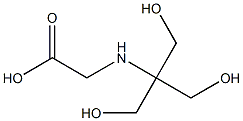Microbiology Reagents
Microbiology is the subject of studying the morphology, structure, classification and genetic variation, physiology and biochemistry and some other life disciplines of microorganisms, being a branch of biology as well.
In the 1860s, the development of the wine industry and the silk industry had further promoted the study of micro-organisms, promoting the rise of microbiology. The French microbiologist Pasteur (Pasteue, L.1822-1895), through years of testing, had proven that the brewing process of wine, and vinegar was actually the fermentation process mediated by microorganisms, rather than the process of production of microorganisms through fermentation, and had also realized that different fermentation processes were triggered by different types of microorganisms. He had also realized that the wine souring is the result of the propagation of harmful microorganisms, and had put forward the scientific method of disinfection. In the study of silkworm disease, chicken cholera, anthrax and rabies, he had confirmed that the infectious diseases were caused by pathogenic microorganisms. Therefore, it is generally recognized that Pasteur is the founder of microbiology.
The object of the microbiology research is a group of low creatures of tiny body, being single-cell or multi-cells of relatively simple individual structure, or even having no cell structure. In the taxonomic system, they respectively belong to virus, prokaryotae, eukaryotic Protista and Fungi, including bacteria, actinomycetes, fungi, yeast, spirochetes, rickettsia, mycoplasma and viruses.
The major research methods of microbiology are:
(1) Classification and identification. Often with an optical microscope (one way is suspending the organisms in liquid; the other is fixed staining of the smears) for observing the morphology of the microorganisms.
(2) Inoculation, isolation, and purification.
(3) Determination of growth, reproduction and physiological as well as biochemical reactions. Since the 20th century, due to the invention of the electron microscope as well as the application of the isotope tracer, the study of microbes has been greatly boosted, promoting the rapid development of microbial theory of science.
The main contents of microbiology are:
(1) The morphology, structure, classification, and identification of the microorganisms.
(2) Study the basic principle of the physiological and biochemical responses, growth and reproduction and genetic mutation of microbes.
(3) Study the microbial ecology and the relationship between microbes and other organisms.
(4) Study the microbial applications in agriculture, industry, environmental protection, health care and other aspects.
There is an extremely broad of distribution of microorganisms in nature. Therefore, the microbial activity is closely related to people's life and production. Some microbes can cause infectious diseases in humans and animals and plants. But most microbes are beneficial or harmless to human, animals and plants. They have been widely used in industrial and agricultural production. For their applications, we can either directly take advantage of its cells pellet, or take advantage of their metabolites or metabolic activity. There are many microorganisms that have been processed or used for the production of food, medicine, chemicals, biological materials, feed, and pesticide. Microbiology is both applicative disciplines as well as basic disciplines. Microbiology is an important part of biology, and is often associated with molecular biology, playing an important role in exploring the essence of life, biological activity patterns, and evolution of biological origin. Owing to various advantages of microorganisms such as simple structure, fast reproduction, easy cultivation and easy application of specific mutants, they can act as good material for research of many basic biological questions.
- Chemical Name:Peptone
- CAS:73049-73-7
- MF:C13H24O4
- Chemical Name:IRON PEPTONATE
- CAS:91079-40-2
- MF:
- Chemical Name:Meat extracts, beef
- CAS:68990-09-0
- MF:N/A
- Chemical Name:Gelatin peptone
- CAS:
- MF:
- Structure:

- Chemical Name:TRICINE
- CAS:
- MF:C6H13NO5
- Chemical Name:Streptomyces microflavus
- CAS:
- MF:
- Chemical Name:SOYBEAN MEAL
- CAS:68308-36-1
- MF:
- Chemical Name:COENZYME
- CAS:
- MF:C21H27N7O14P2
- Chemical Name:culture medium
- CAS:
- MF:
- Chemical Name:MALT EXTRACT AGAR
- CAS:
- MF:
- Chemical Name:TRYPTONE (VEGETABLE)
- CAS:
- MF:
- Chemical Name:5 KG YEAST EXTRACT SERVABACTERPOWDER
- CAS:
- MF:
- Chemical Name:Buffer solution, pH 1.00 (±0.01 at 25°C), No Color, Specpure, NIST Traceable
- CAS:
- MF:
- Structure:

- Chemical Name:1,4-BIS-[4-(6-ACRYLOYLOXYHEXYLOXY)BENZOYLOXY]-2- METHYLBENZENE
- CAS:193146-14-4
- MF:C26H36O4S
- Chemical Name:PRIMAGEN PEPTONE FROM ANIMAL TISSUE
- CAS:
- MF: